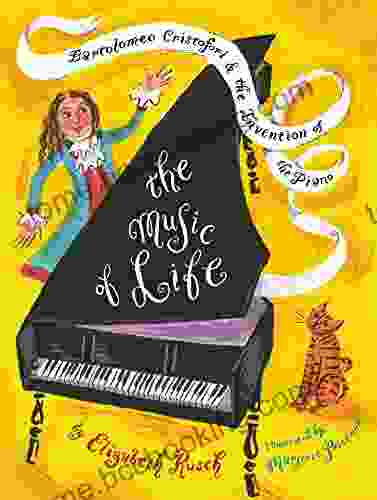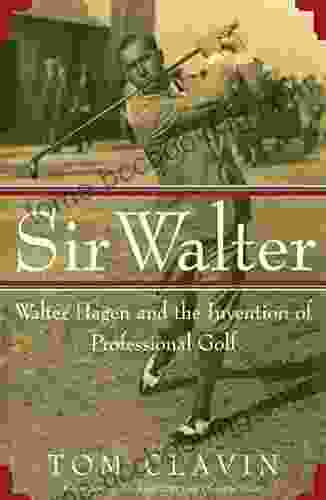Bartolomeo Cristofori: The Invention of the Piano

A Musical Revolutionary
In the annals of musical history, one name stands out as the father of the piano: Bartolomeo Cristofori. This Italian harpsichord maker embarked on a lifelong quest to create an instrument that could not only produce beautiful sounds but also offer a wide range of dynamics and expressive capabilities. Through his unwavering dedication and exceptional craftsmanship, Cristofori revolutionized the world of music forever.
4.8 out of 5
| Language | : | English |
| File size | : | 14527 KB |
| Print length | : | 25 pages |
| Screen Reader | : | Supported |
The Harpsichord's Limitations
Before Cristofori's time, the harpsichord reigned supreme as the preferred keyboard instrument. However, the harpsichord had several limitations. Its sound was produced by plucking strings with quills, resulting in a distinct, twangy tone that lacked both volume and expressive nuance. Furthermore, the harpsichord's dynamics were fixed, making it challenging to convey subtle variations in volume and articulation.
Cristofori's Ingenious Invention
Inspired by the desire to overcome these limitations, Cristofori began experimenting with new mechanisms. He replaced the harpsichord's quills with hammers covered in soft leather, striking the strings from below. This innovation allowed for a much wider range of dynamics, from delicate pianissimos to thunderous fortissimos. Moreover, Cristofori introduced a sophisticated escapement mechanism that allowed the hammers to return to their resting position immediately after striking the strings, enabling rapid repetition.
The Birth of the Pianoforte
The first instruments resulting from Cristofori's tireless efforts were known as "pianofortes," combining the Italian words "piano" (soft) and "forte" (loud). These early pianofortes featured a delicate sound and a relatively small range of dynamics compared to later models. However, they represented a significant advancement in musical technology, providing composers and performers with an unprecedented level of expressive freedom.
Technical Innovations
Cristofori's invention was not merely a matter of replacing quills with hammers. He also made several other ingenious technical innovations. For example, he devised a new type of keyboard with a longer, balanced action that provided pianists with greater control over the instrument. Additionally, he reinforced the soundboard to withstand the increased tension of the strings, ensuring that the piano could sustain its rich, resonant tone.
A Legacy that Endures
Bartolomeo Cristofori's invention of the piano had a profound impact on the course of music. The piano quickly became the dominant keyboard instrument, inspiring countless composers and performers to create masterpieces that would shape the sound of Western music for centuries to come. From Mozart's graceful concertos to Beethoven's thunderous sonatas, the piano provided the foundation for some of the most iconic works in the classical repertoire.
Bartolomeo Cristofori's legacy lives on in every piano played today. His unwavering dedication to innovation and his exceptional craftsmanship gave birth to an instrument that has enriched the lives of countless musicians and music lovers alike. The piano has become an indispensable part of our musical culture, inspiring creativity, fostering collaboration, and bringing joy to people of all ages and backgrounds. As we marvel at the beauty and expressiveness of this remarkable instrument, let us remember the ingenious mind of Bartolomeo Cristofori, the man who made it all possible.
4.8 out of 5
| Language | : | English |
| File size | : | 14527 KB |
| Print length | : | 25 pages |
| Screen Reader | : | Supported |
Do you want to contribute by writing guest posts on this blog?
Please contact us and send us a resume of previous articles that you have written.
 Book
Book Novel
Novel Page
Page Chapter
Chapter Text
Text Story
Story Genre
Genre Reader
Reader Library
Library Paperback
Paperback E-book
E-book Magazine
Magazine Newspaper
Newspaper Paragraph
Paragraph Sentence
Sentence Bookmark
Bookmark Shelf
Shelf Glossary
Glossary Bibliography
Bibliography Foreword
Foreword Preface
Preface Synopsis
Synopsis Annotation
Annotation Footnote
Footnote Manuscript
Manuscript Scroll
Scroll Codex
Codex Tome
Tome Bestseller
Bestseller Classics
Classics Library card
Library card Narrative
Narrative Biography
Biography Autobiography
Autobiography Memoir
Memoir Reference
Reference Encyclopedia
Encyclopedia Eliza Raine
Eliza Raine Elaine Menger
Elaine Menger Dwight Chapin
Dwight Chapin Edmond Scannell
Edmond Scannell Lyn Barrett
Lyn Barrett Dylan Tomine
Dylan Tomine Helen Webster
Helen Webster Ian J Malone
Ian J Malone Ronnie Smith
Ronnie Smith Ella S Kitchen
Ella S Kitchen Elizabeth George Speare
Elizabeth George Speare Eddie Jaku
Eddie Jaku Miguel Carvalho Abrantes
Miguel Carvalho Abrantes Edward D Hess
Edward D Hess Elizabeth Goss
Elizabeth Goss Elizabeth Size
Elizabeth Size Ed Webster
Ed Webster Jean Michel Cousteau
Jean Michel Cousteau Joe Varady
Joe Varady Elizabeth Mcpherson
Elizabeth Mcpherson
Light bulbAdvertise smarter! Our strategic ad space ensures maximum exposure. Reserve your spot today!
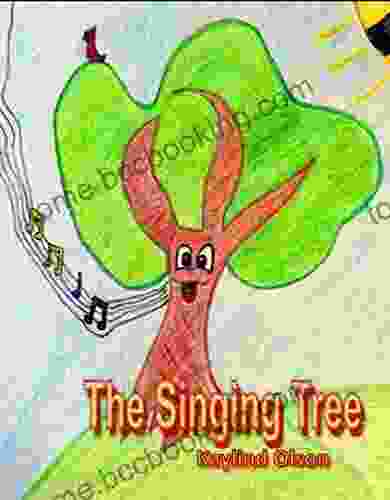
 Hunter MitchellThe Singing Tree Grandmas Universe: A Literary Odyssey for Young Explorers
Hunter MitchellThe Singing Tree Grandmas Universe: A Literary Odyssey for Young Explorers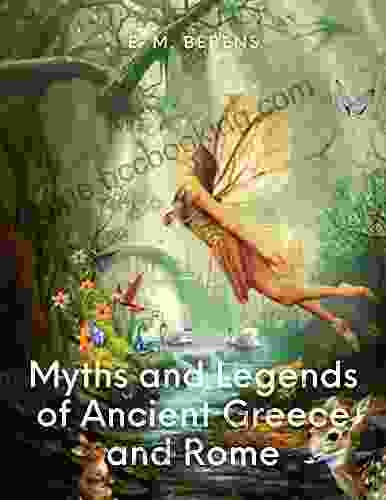
 Michael ChabonUnveiling the Classics: An Illustrated and Annotated Journey through Literary...
Michael ChabonUnveiling the Classics: An Illustrated and Annotated Journey through Literary... Benjamin StoneFollow ·15.3k
Benjamin StoneFollow ·15.3k Jan MitchellFollow ·17.8k
Jan MitchellFollow ·17.8k Jorge Luis BorgesFollow ·8.7k
Jorge Luis BorgesFollow ·8.7k Russell MitchellFollow ·15.3k
Russell MitchellFollow ·15.3k Guy PowellFollow ·4k
Guy PowellFollow ·4k Julio CortázarFollow ·6.4k
Julio CortázarFollow ·6.4k Dylan HayesFollow ·9.5k
Dylan HayesFollow ·9.5k John KeatsFollow ·18.2k
John KeatsFollow ·18.2k
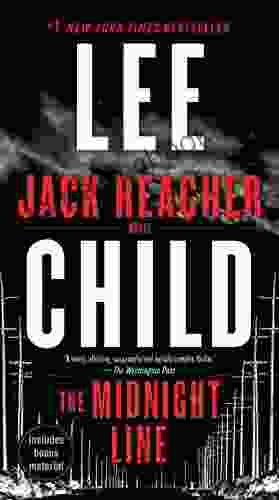
 Clarence Brooks
Clarence BrooksUncover the Secrets in the Dead of Night: Dive into Lee...
Step into the heart-stopping world of Jack...

 Clay Powell
Clay PowellAce the GMAT Grammar Section: Your Last-Minute...
The GMAT is a challenging...

 Salman Rushdie
Salman RushdieEmbark on a Heartwarming Journey with "The All Together...
: Immerse yourself in the charming world of...
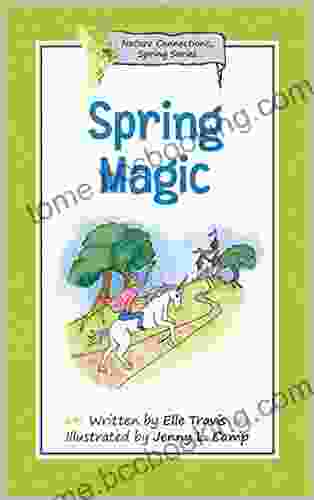
 Dawson Reed
Dawson ReedSpring Magic: Stunningly Illustrated Fun for Kids to...
Welcome to the Enchanting World of...
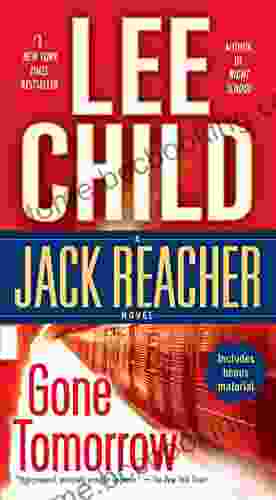
 Bradley Dixon
Bradley DixonGone Tomorrow: A Gripping Thriller by Lee Child that Will...
In the literary realm of thrillers, few...
4.8 out of 5
| Language | : | English |
| File size | : | 14527 KB |
| Print length | : | 25 pages |
| Screen Reader | : | Supported |


